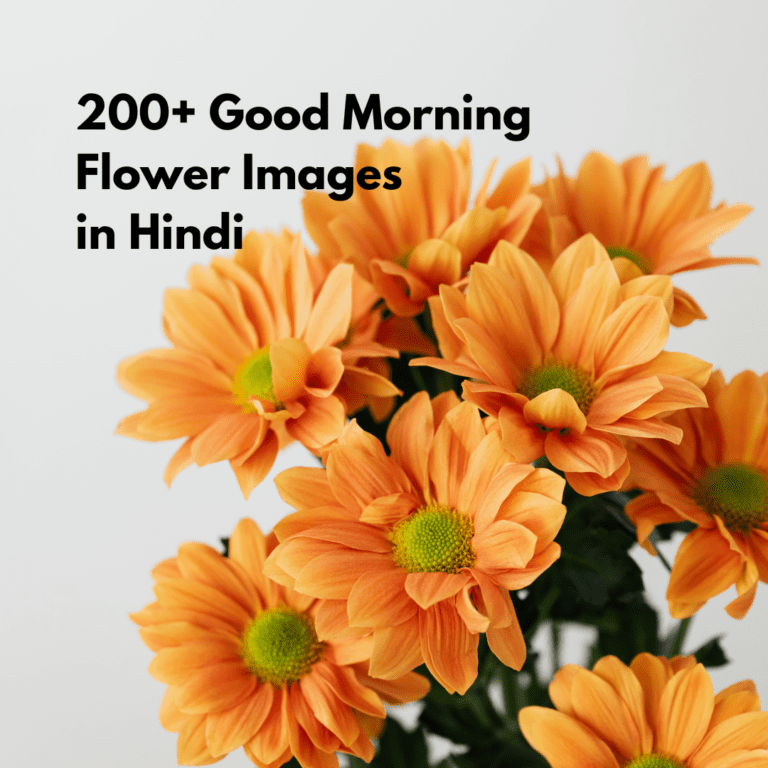Maha Shivaratri Photos – महाशिवरात्रि, भगवान शिव को समर्पित एक विशेष रात है, जो भारत भर में श्रद्धा के साथ मनाई जाती है। भक्त उपवासी रहते हैं, पूजा करते हैं और शिव की आराधना के लिए जागरण करते हैं। इस रात “ॐ नमः शिवाय” का जाप, दीप जलाना और धार्मिक अनुष्ठान किए जाते हैं। मंदिरों और घरों में रोशनी से वातावरण को शुभ बनाया जाता है। यह समय ध्यान और भक्ति का होता है।महाशिवरात्रि, भगवान शिव को समर्पित एक विशेष रात है, जो भारत भर में श्रद्धा के साथ मनाई जाती है। भक्त उपवासी रहते हैं, पूजा करते हैं और शिव की आराधना के लिए जागरण करते हैं। इस रात “ॐ नमः शिवाय” का जाप, दीप जलाना और धार्मिक अनुष्ठान किए जाते हैं। मंदिरों और घरों में रोशनी से वातावरण को शुभ बनाया जाता है। यह समय ध्यान और भक्ति का होता है।
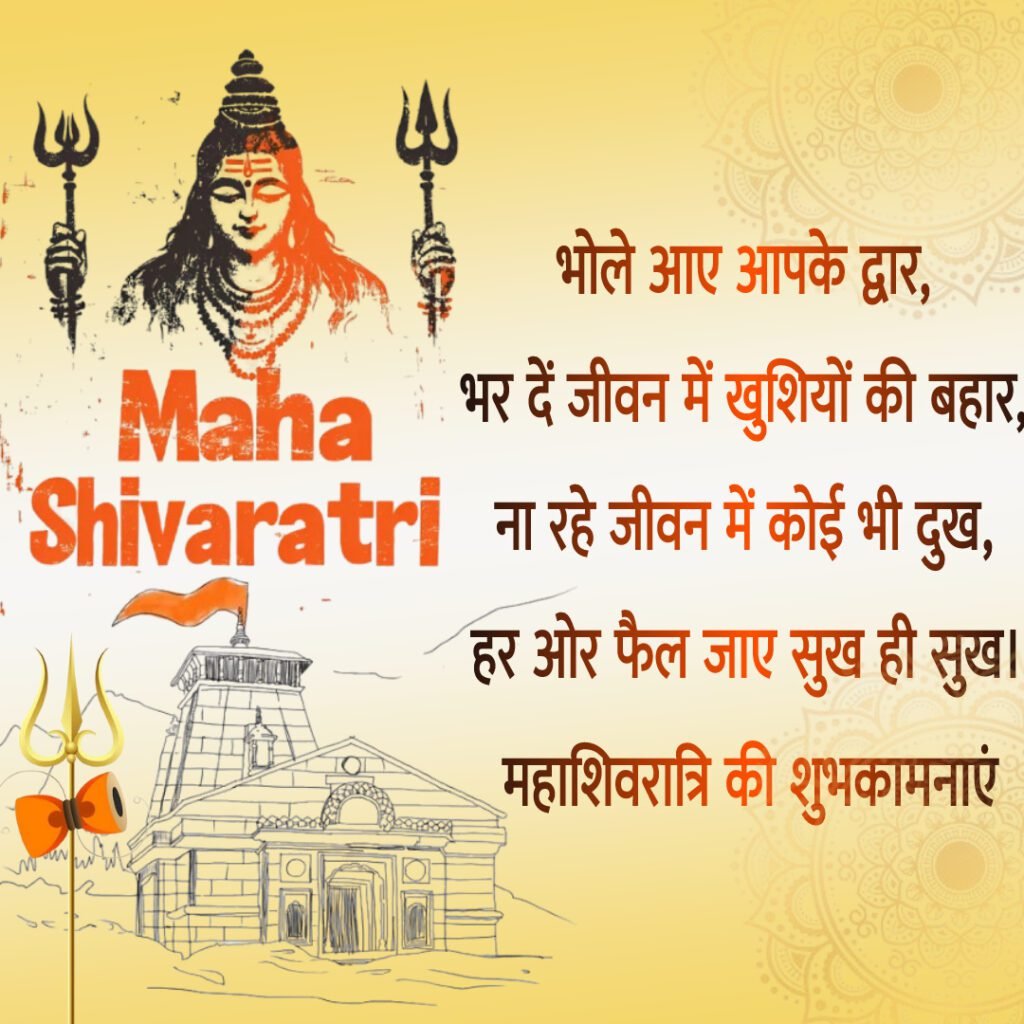
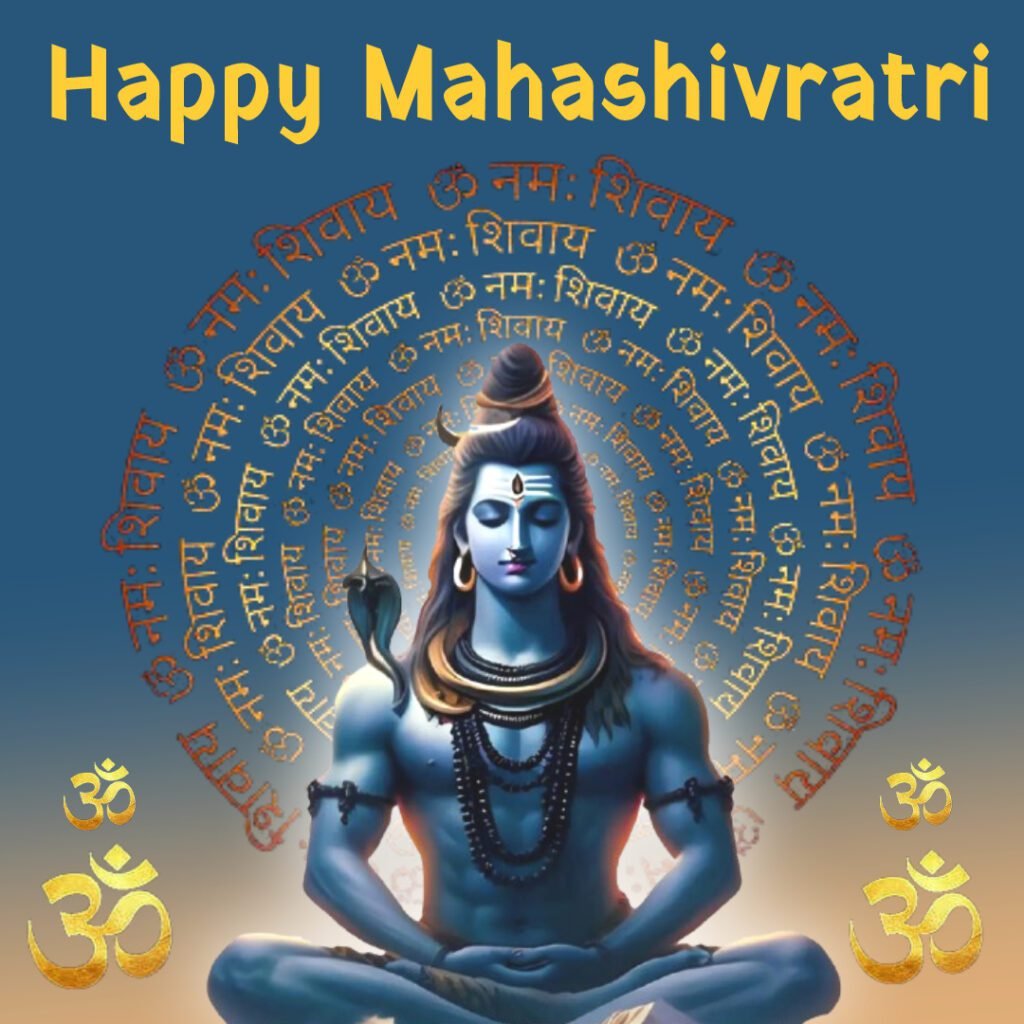
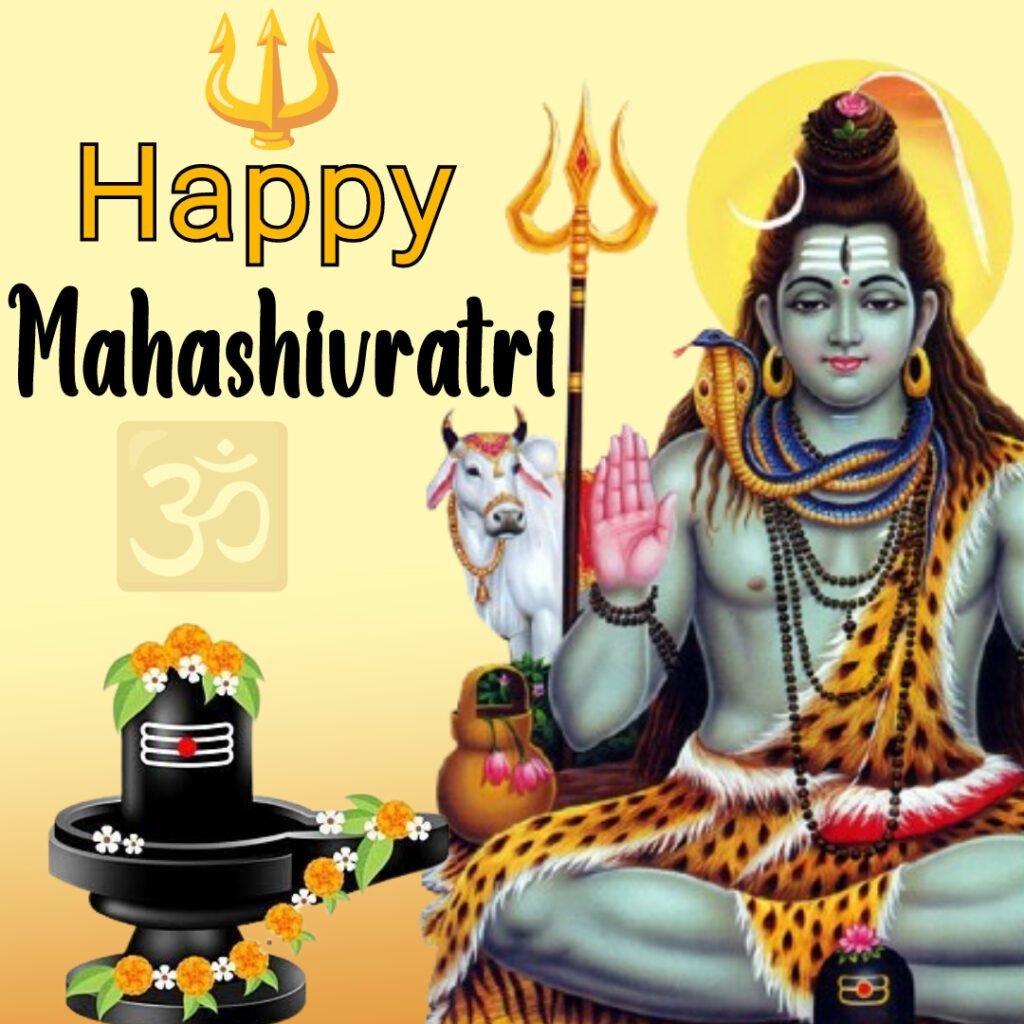
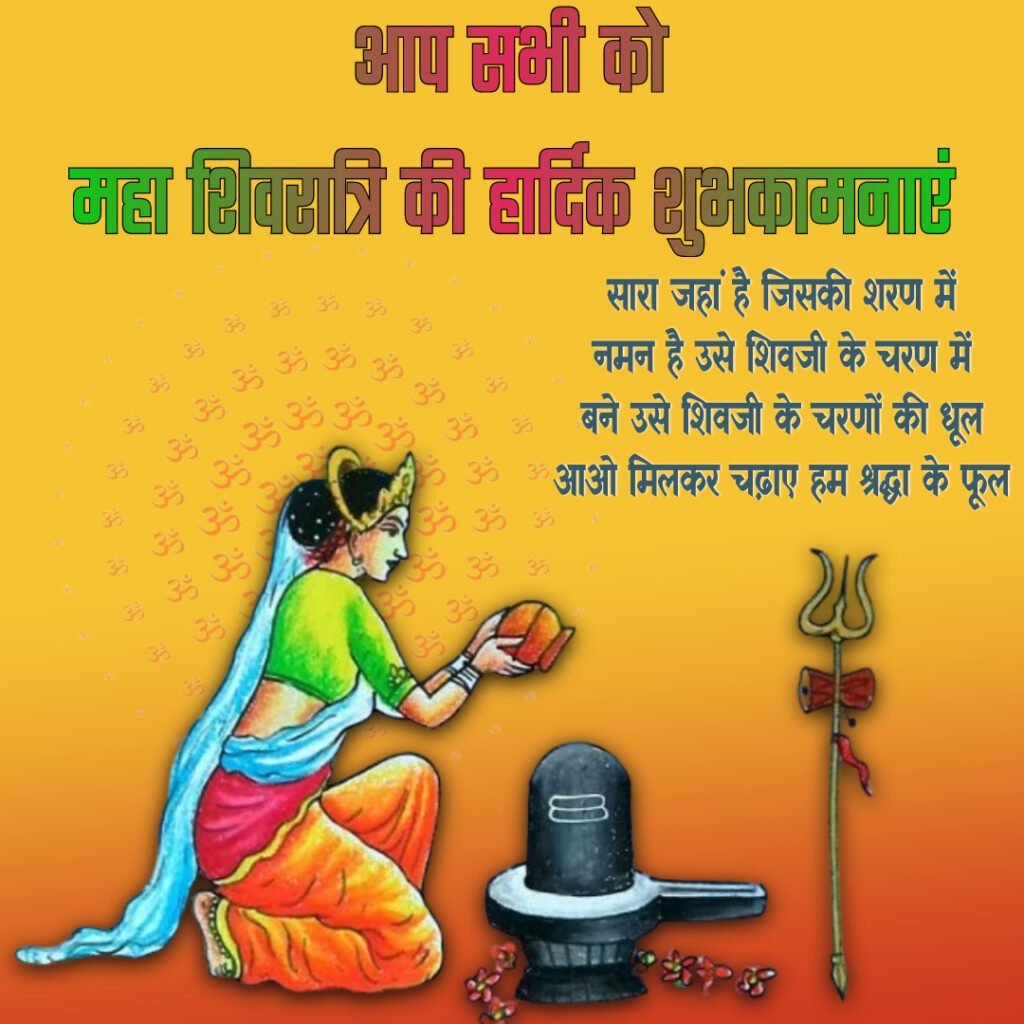
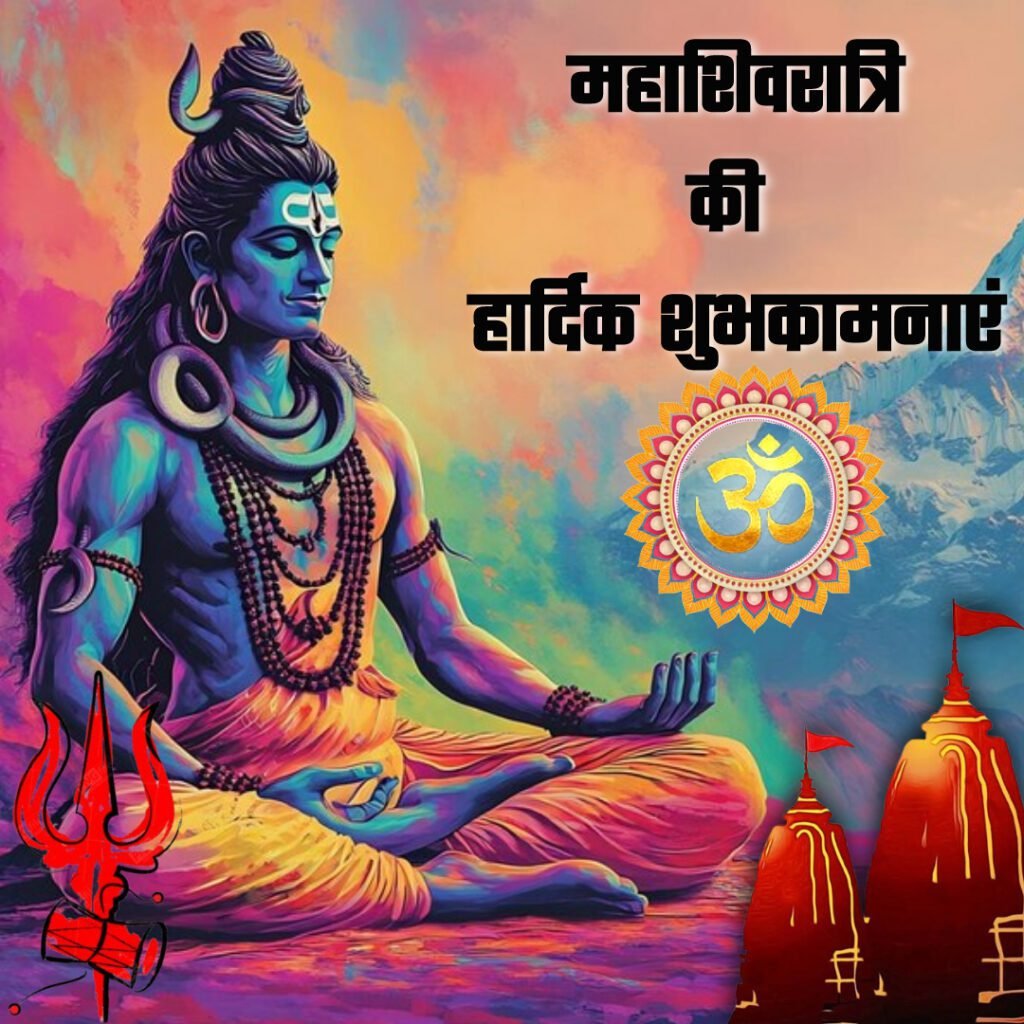
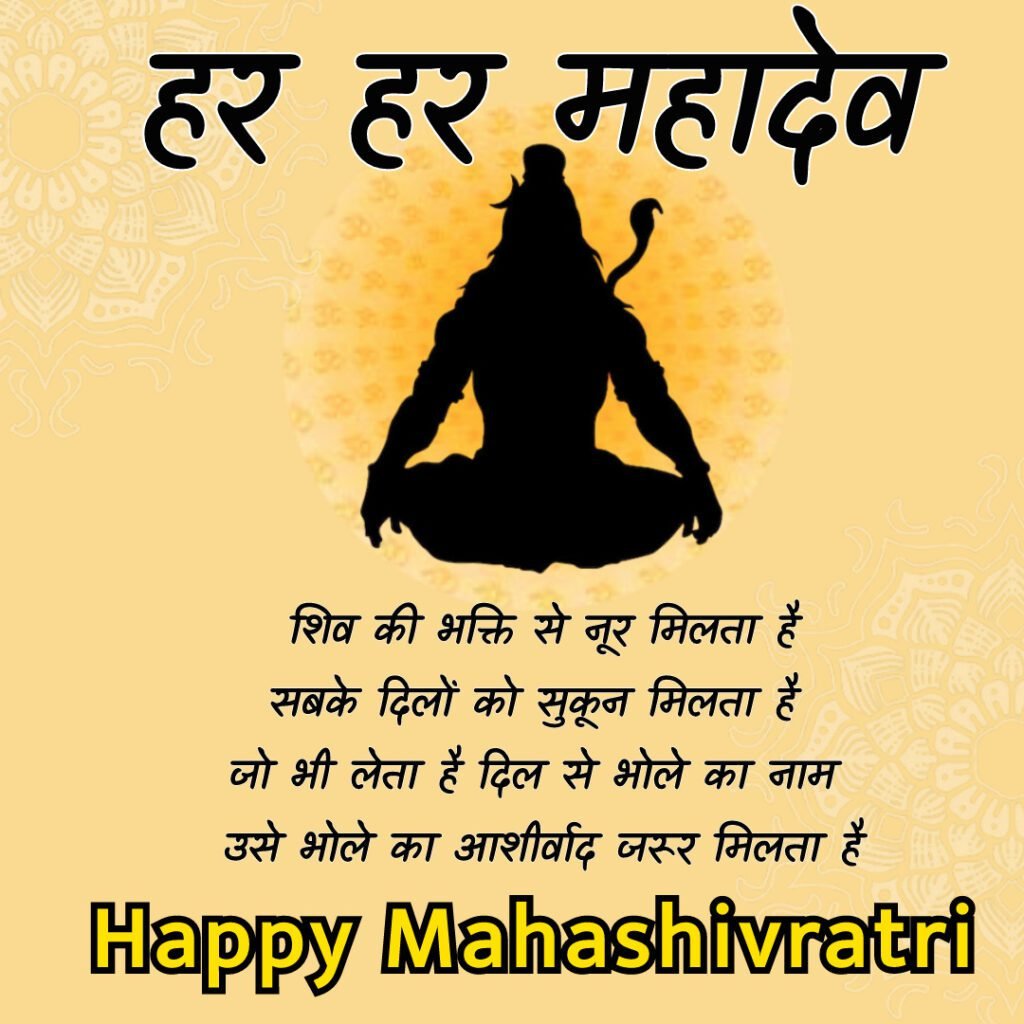
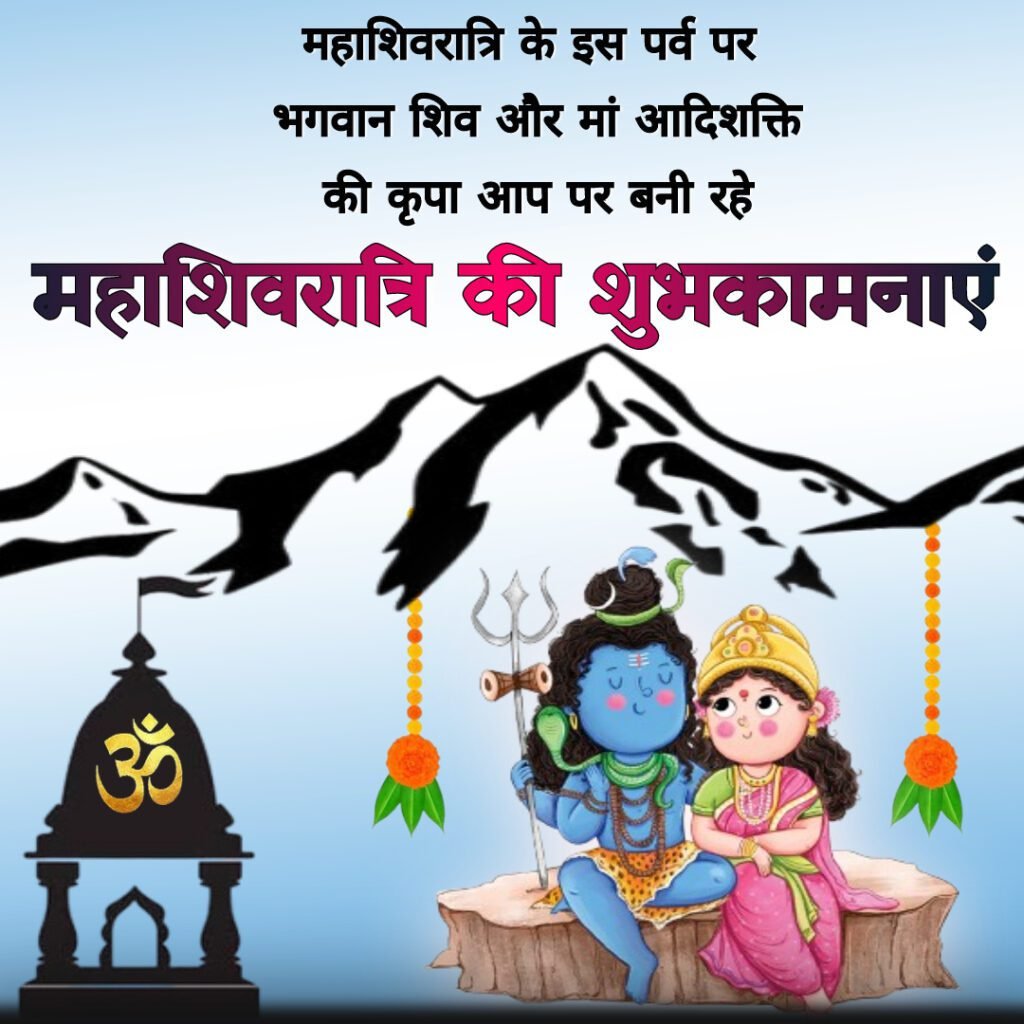
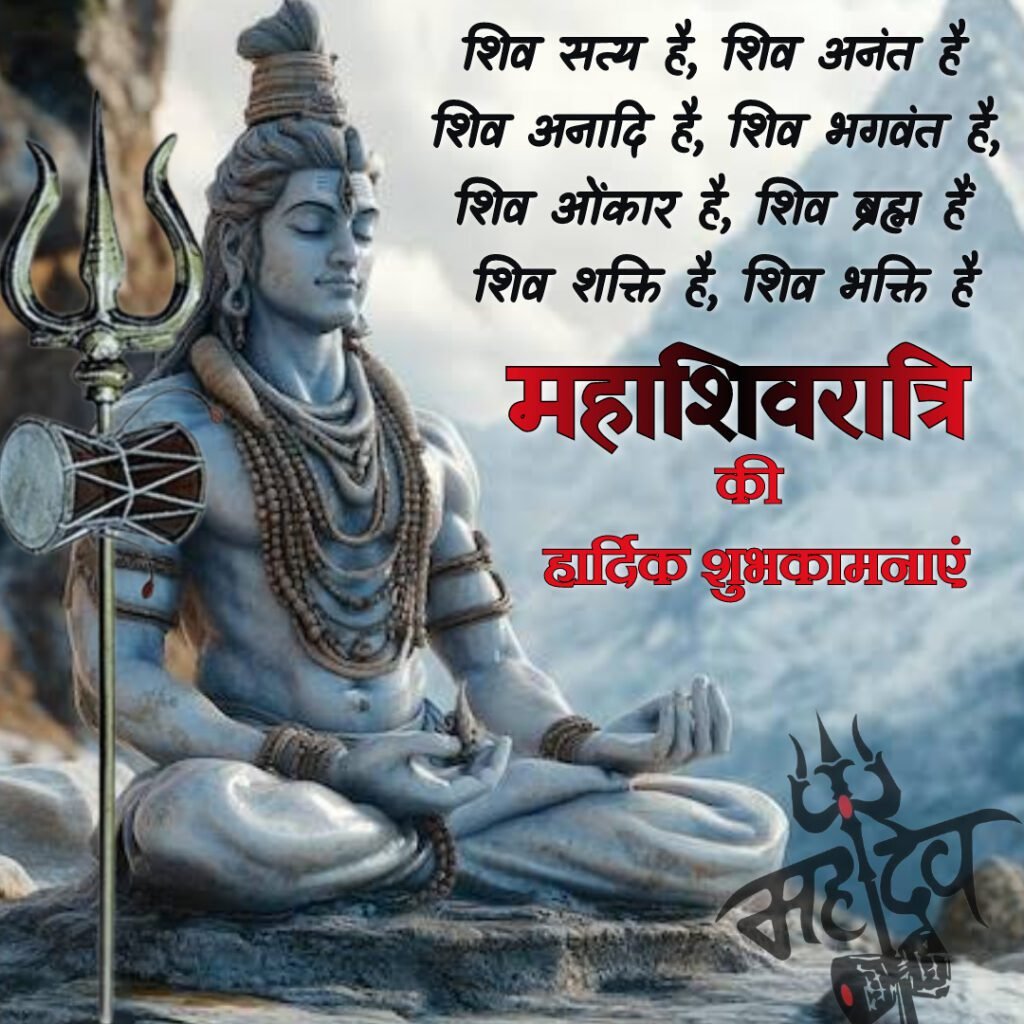

Lord Shiva Mantra
Lord Shiva has many powerful mantras that are chanted by his devotees for peace, prosperity, and spiritual growth. Here are some of the most popular mantras dedicated to Lord Shiva:
Om Namah Shivaya
The most famous and powerful mantra of Lord Shiva. It is a universal mantra for purification, seeking blessings, and connecting with the divine.Meaning: “I bow to Lord Shiva” or “Salutations to Lord Shiva.”
Maha Mrityunjaya Mantra
This is one of the most potent mantras for healing and protection. It is often known as the “Death Conquering Mantra.”Mantra:
“Om Tryambakam Yajamahe Sugandhim Pushtivardhanam,
Urvarukamiva Bandhanan Mrityor Mukshiya Maamritat.”Meaning: “We meditate upon the three-eyed one (Lord Shiva), who is fragrant and who nourishes all beings. May he liberate us from the bondage of death and grant us immortality.”
Om Shiva Shambho
This mantra is a prayer to Lord Shiva, invoking his blessings for peace and fulfillment.Mantra:
“Om Shiva Shambho”Meaning: “Om, Lord Shiva, the source of all auspiciousness, grant us peace.”
Om Hraum Namah
A mantra to invoke the blessings of Lord Shiva, especially for inner peace and prosperity.Meaning: “Om, I bow to Lord Shiva, who is the essence of all knowledge and wisdom.”
Om Namo Bhagavate Rudraya
A powerful mantra to seek the grace of Lord Shiva, especially during difficult times.Mantra:
“Om Namo Bhagavate Rudraya”Meaning: “I bow to Lord Rudra (Shiva), the great god who is the source of creation.”
These mantras are often recited with devotion and focus, either individually or as part of a group during Shiva-related rituals or worship, particularly during Maha Shivaratri. Regular chanting of these mantras is believed to bring peace, remove obstacles, and lead to spiritual liberation.
यहाँ भगवान शिव के कुछ प्रमुख और शक्तिशाली मंत्र दिए गए हैं, जिन्हें उनके भक्त शांति, समृद्धि और आध्यात्मिक उन्नति के लिए जपते हैं:
ॐ नमः शिवाय
भगवान शिव का सबसे प्रसिद्ध और शक्तिशाली मंत्र। यह मंत्र शुद्धि, आशीर्वाद प्राप्त करने और दिव्य से जुड़ने के लिए उच्चारित किया जाता है।
अर्थ: “मैं भगवान शिव को प्रणाम करता हूँ।”महामृत्युञ्जय मंत्र
यह मंत्र healing और सुरक्षा के लिए सबसे शक्तिशाली माना जाता है। इसे “मृत्यु पर विजय प्राप्त करने वाला मंत्र” भी कहा जाता है।
मंत्र:
“ॐ त्र्यम्बकं यजामहे सुगंधिं पुष्टिवर्धनम्,
उर्वारुकमिव बन्धनान् मृत्योर्मुक्षीय मामृतात्।”अर्थ: “हम तीन नेत्र वाले (भगवान शिव) की पूजा करते हैं, जो सुगंधित हैं और सभी प्राणियों की पोषण करने वाले हैं। वे हमें मृत्यु के बंधन से मुक्ति दें और अमरत्व का आशीर्वाद दें।”
ॐ शिव शम्भो
यह मंत्र भगवान शिव से शांति और पूर्णता के आशीर्वाद के लिए उच्चारित किया जाता है।
मंत्र:
“ॐ शिव शम्भो”अर्थ: “ॐ, भगवान शिव, जो सभी शुभता के स्रोत हैं, हमें शांति का आशीर्वाद दें।”
ॐ ह्रौं नमः
यह मंत्र भगवान शिव से आशीर्वाद प्राप्त करने के लिए है, विशेष रूप से आंतरिक शांति और समृद्धि के लिए।
अर्थ: “ॐ, मैं भगवान शिव को प्रणाम करता हूँ, जो सभी ज्ञान और बुद्धि के साक्षात रूप हैं।”ॐ नमो भगवते रुद्राय
यह मंत्र भगवान शिव के रुद्र रूप के आशीर्वाद के लिए है, विशेष रूप से कठिन समय में।
मंत्र:
“ॐ नमो भगवते रुद्राय”अर्थ: “मैं भगवान रुद्र (शिव) को प्रणाम करता हूँ, जो सृष्टि के महान स्रोत हैं।”
इन मंत्रों का उच्चारण विशेष रूप से महाशिवरात्रि के दौरान या किसी शिव पूजा में किया जाता है। नियमित रूप से इन मंत्रों का जाप शांति, बाधाओं का निवारण और आध्यात्मिक मुक्ति की ओर मार्गदर्शन करने के लिए माना जाता है।
Maha Shivaratri: A Celebration of Divine Spirituality and Devotion
Maha Shivaratri, also known as the Great Night of Shiva, is one of the most significant and spiritually important festivals in Hinduism. Celebrated annually with fervor across India and in many parts of the world, it honors Lord Shiva, one of the principal deities of the Hindu trinity (Trimurti). This sacred night offers devotees a chance to worship, meditate, and deepen their connection with Lord Shiva. The festival falls on the 14th day of the dark fortnight in the month of Phalguna (February–March), according to the Hindu lunar calendar.
1. Significance of Maha Shivaratri:
Maha Shivaratri is often regarded as the night when Lord Shiva performed the cosmic dance of creation, preservation, and destruction. The festival represents the triumph of light over darkness, knowledge over ignorance, and good over evil. It is believed that on this auspicious night, Lord Shiva married Goddess Parvati, and also, he manifested in his most powerful form, the “lingam” (a symbol of his infinite nature).
Another belief associated with Maha Shivaratri is that it is the night when Lord Shiva performed the “Tandava,” his cosmic dance. The performance of the Tandava symbolizes the cycle of creation, preservation, and destruction that governs the universe. Thus, this night symbolizes a balance between creation and destruction, life and death.
Maha Shivaratri also marks the day when Lord Shiva drank the poison during the churning of the ocean (Samudra Manthan), saving the universe from destruction. It is believed that by worshiping Shiva on this night, one can absolve their sins and attain liberation (Moksha).
2. The Importance of Lord Shiva:
Lord Shiva, often called Mahadeva, is one of the most revered deities in Hinduism. He is the destroyer and transformer in the Hindu trinity, alongside Brahma, the creator, and Vishnu, the preserver. However, Shiva is not just the destroyer in the literal sense but also a symbol of transformation, destruction of ego, and the removal of ignorance.
Shiva is depicted as the yogi, meditating in the Himalayas, and is revered for his ascetic lifestyle. He is also known as the lord of the dance (Nataraja), the god of fertility, the protector of all beings, and the one who bestows grace and blessings on his devotees. His blue throat, as a result of drinking the poison during the churning of the ocean, signifies his selflessness and the power of self-sacrifice.
For many devotees, worshiping Lord Shiva is not only about seeking blessings but also about introspection and spiritual growth. Shiva is considered to be a deity that transcends time and space, who guides his devotees toward self-realization and ultimate liberation.
3. Rituals and Customs:
Maha Shivaratri is not just a day of prayers but a night full of intense devotion and rituals. The most significant custom associated with this day is fasting and staying awake the entire night. Devotees believe that observing vigil during this night helps cleanse the mind and soul, keeping away distractions and worldly desires.
a. Fasting and Vrat (Vow): Fasting on Maha Shivaratri is considered extremely auspicious. Devotees refrain from consuming food and water, while others may observe partial fasting. The fast is seen as an act of penance, which purifies the body and mind. Some people eat fruits and nuts during the day, while others keep a strict fast. The vow taken during Maha Shivaratri is often regarded as a means to show devotion to Lord Shiva and to earn his divine blessings.
b. Abhishekam and Pooja (Rituals and Worship): Devotees perform “Abhishekam” (ritual bathing) on Shiva Lingams or idols with milk, honey, water, and other offerings. This ritual symbolizes the cleansing of impurities and is considered to invoke Lord Shiva’s blessings. The chanting of “Om Namah Shivaya” or the recital of Shiva’s 108 names is central to the prayers performed during Maha Shivaratri. Offerings of Bael leaves (Bilva Patra), fruits, and flowers are placed at the Shiva altar.
The prayers often begin in the evening and continue throughout the night. Devotees sing bhajans (devotional songs) and recite mantras, creating an atmosphere of devotion and spiritual upliftment.
c. Night Vigil (Jaagran): One of the most unique features of Maha Shivaratri is the night-long vigil. Devotees stay awake throughout the night, engaging in prayers, chanting, and meditations. The significance of staying awake is symbolic of the need to keep one’s consciousness awake and alert to the divine presence. The night is divided into four quarters, and in each quarter, different prayers and rituals are observed. This vigil is believed to purify the body and mind, fostering a deep connection with Lord Shiva.
d. Chanting and Meditation: Chanting the “Om Namah Shivaya” mantra is an essential part of the worship on Maha Shivaratri. This mantra is said to have a calming effect on the mind and is considered highly auspicious. Devotees often meditate during the night, focusing on Lord Shiva’s divine attributes and seeking peace, blessings, and liberation from worldly attachments. Meditation helps devotees detach from their daily worries and find spiritual solace.
4. The Spiritual Meaning of Maha Shivaratri:
Maha Shivaratri is not only a festival of worship but also a deep spiritual journey. The rituals of fasting, praying, chanting, and meditating aim to lead the individual toward higher levels of consciousness and enlightenment. It is an opportunity for introspection and self-purification.
The night of Maha Shivaratri is believed to be a powerful time for spiritual growth, as Lord Shiva, the source of cosmic energy, is believed to be particularly active on this night. Devotees seek to immerse themselves in his divine presence, letting go of materialistic desires and focusing solely on spiritual aspirations.
a. Overcoming the Ego: One of the key lessons of Maha Shivaratri is the importance of overcoming the ego. Lord Shiva, in his meditative state, is seen as the epitome of detachment and inner peace. By meditating on him, devotees seek to dissolve their egos and understand their true nature. This is seen as a path to self-realization and ultimate liberation.
b. Overcoming Darkness: Maha Shivaratri, falling during the darkest phase of the lunar cycle, symbolizes the victory of light over darkness. It reminds devotees that even in the darkest times, divine light will ultimately prevail. The vigil, fasting, and chanting all represent the quest for inner light, knowledge, and wisdom, dispelling the darkness of ignorance and fear.
5. Cultural and Regional Variations:
While the central theme of Maha Shivaratri remains the same, different regions of India celebrate the festival in unique ways, adding their cultural touch to the rituals.
a. In North India: In many parts of North India, especially in Uttar Pradesh, Bihar, and Delhi, Maha Shivaratri is marked by grand processions, with people gathering in temples for prayers and offerings. Devotees gather in large numbers at the famous Kashi Vishwanath Temple in Varanasi and the Somnath Temple in Gujarat to participate in the night-long worship.
b. In South India: In Tamil Nadu, Maha Shivaratri is celebrated with much grandeur in the temples. Special rituals are performed at famous Shiva temples like the Meenakshi Temple in Madurai. In Tamil Nadu, the night of Shivaratri is observed as a night of chanting and bhajans, with devotees singing praises of Lord Shiva.
c. In Maharashtra: In Maharashtra, the celebration of Maha Shivaratri is often associated with elaborate processions, night vigils, and public gatherings. Special meals are prepared, and the night is spent in temple worship and prayers.
d. In Nepal: Maha Shivaratri is celebrated with great enthusiasm in Nepal, particularly in the Pashupatinath Temple. Devotees from across the country gather here to offer prayers, perform rituals, and celebrate with dance and music.
6. Maha Shivaratri and Its Impact on Modern Life:
In today’s fast-paced world, where distractions are numerous, Maha Shivaratri offers a much-needed pause. It provides a space for individuals to reconnect with their spirituality, step away from the hustle and bustle of daily life, and focus on introspection and inner peace. The act of fasting, staying awake, and meditating can help individuals gain clarity, reduce stress, and foster a sense of fulfillment.
Moreover, Maha Shivaratri serves as a reminder that in the chaos of life, finding time for spiritual practices is essential for personal growth. The festival encourages individuals to break free from material concerns and focus on their higher spiritual purpose.
7. Final Words:
Maha Shivaratri is much more than just a religious festival. It is a spiritual awakening that provides individuals the opportunity to reflect on their lives, purify their minds, and seek divine blessings. It celebrates Lord Shiva, who embodies the ultimate truth, transformation, and liberation. The significance of this sacred night extends beyond the rituals, as it calls devotees to contemplate their spiritual journey, remove ignorance, and move toward enlightenment.
Whether through fasting, praying, chanting, or meditating, Maha Shivaratri offers a deep, introspective experience that connects the individual with the divine. It serves as a reminder that the path to spiritual awakening is a journey of self-discipline, devotion, and inner transformation.
By observing the rituals and customs of Maha Shivaratri, devotees not only honor Lord Shiva but also make progress on their spiritual journey toward self-realization and liberation.
How to download Shubh Somwar Images ?
हमारी वेबसाइट Hindiwishes.com पर सभी Images निःशुल्क उपलब्ध हैं। आप इन्हें अपने दोस्तों और रिश्तेदारों के साथ आसानी से साझा कर सकते हैं। उपरोक्त Images को डाउनलोड करना बहुत आसान है।
- Step 1- अपनी पसंद की Image पर नेविगेट करें।
- Step 2 – अपनी पसंद की Image पर राइट क्लिक करें।
- Step 3 – खुले मेनू में Share Now विकल्प का चयन करें।
- Step 4 – व्हाट्सएप, फेसबुक, इंस्टाग्राम, ई-मेल आदि पर एक क्लिक में साझा करें या अपने फोन में छवि सहेजने के लिए डाउनलोड इमेज विकल्प चुनें।
Also Check-
- Looking for Shubh Somwar Images for wishes in HD – Click Here
- Looking for Shubh Mangalwar Images for wishes in HD – Click Here
- Looking for Shubh Budhwar Images for wishes in HD – Click Here
- Looking for Shubh Guruwar Images for wishes in HD – Click Here
- Looking for Shubh Shukrawar Images for wishes in HD – Click Here
- Looking for Shubh Shaniwar Images for wishes in HD – Click Here
- Looking for Shubh Ravivar Images for wishes in HD – Click Here
- Looking for Happy Sunday Images for wishes in HD – Click Here
- Top 10 WhatsApp Status in Hindi – Click Here


